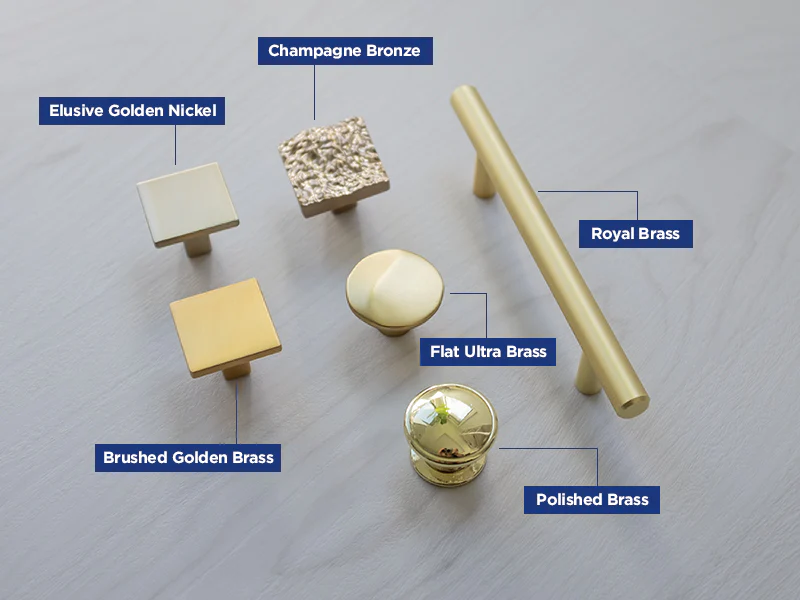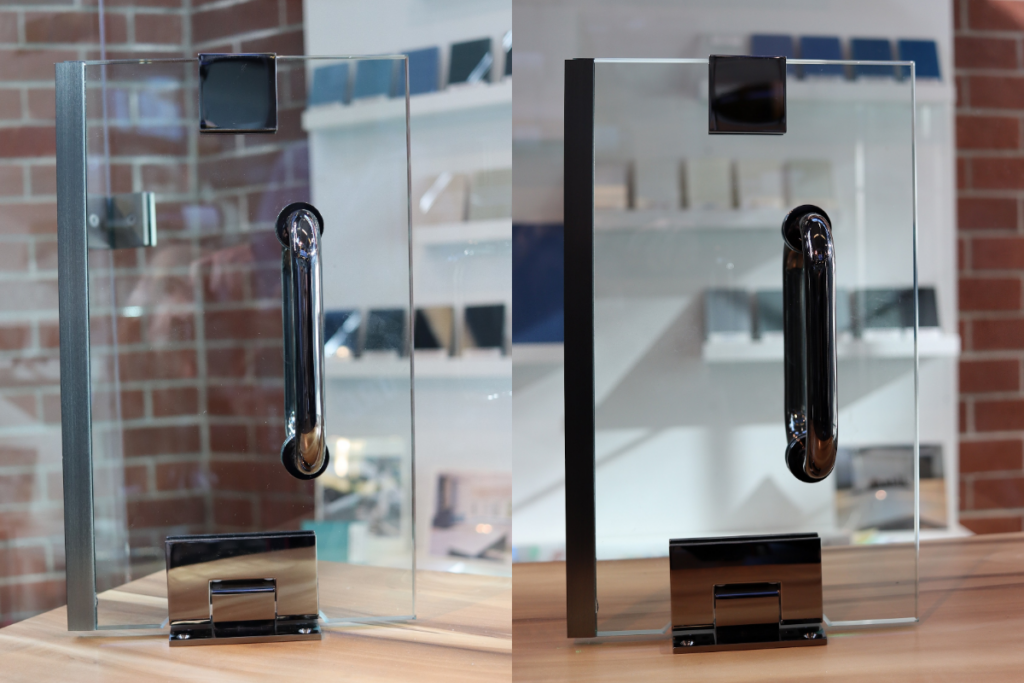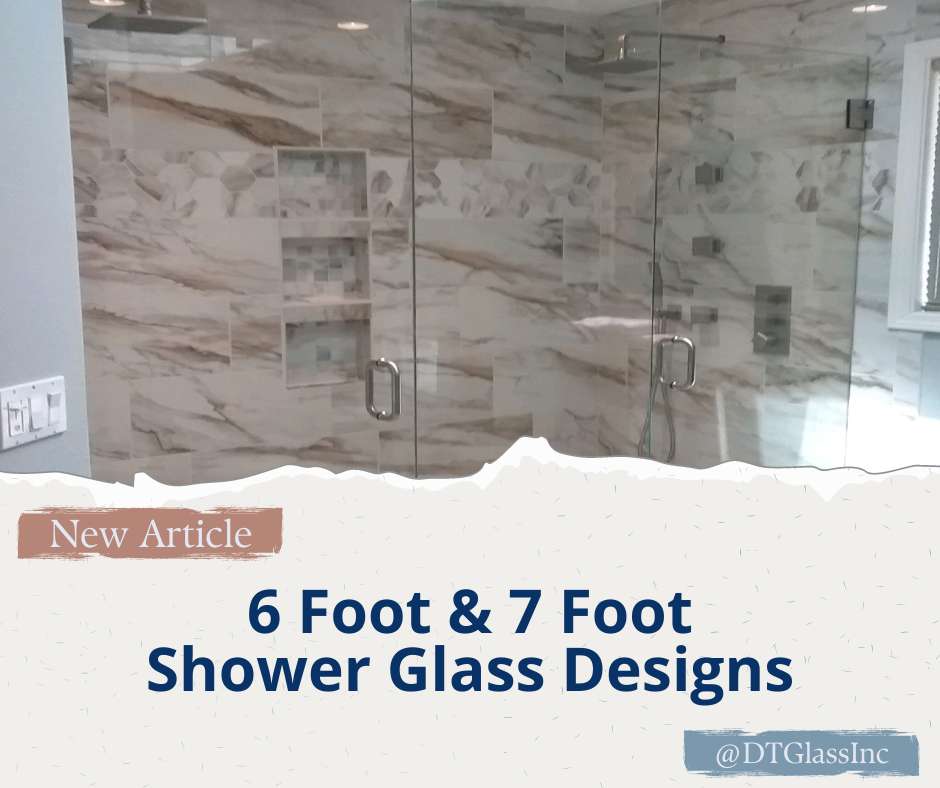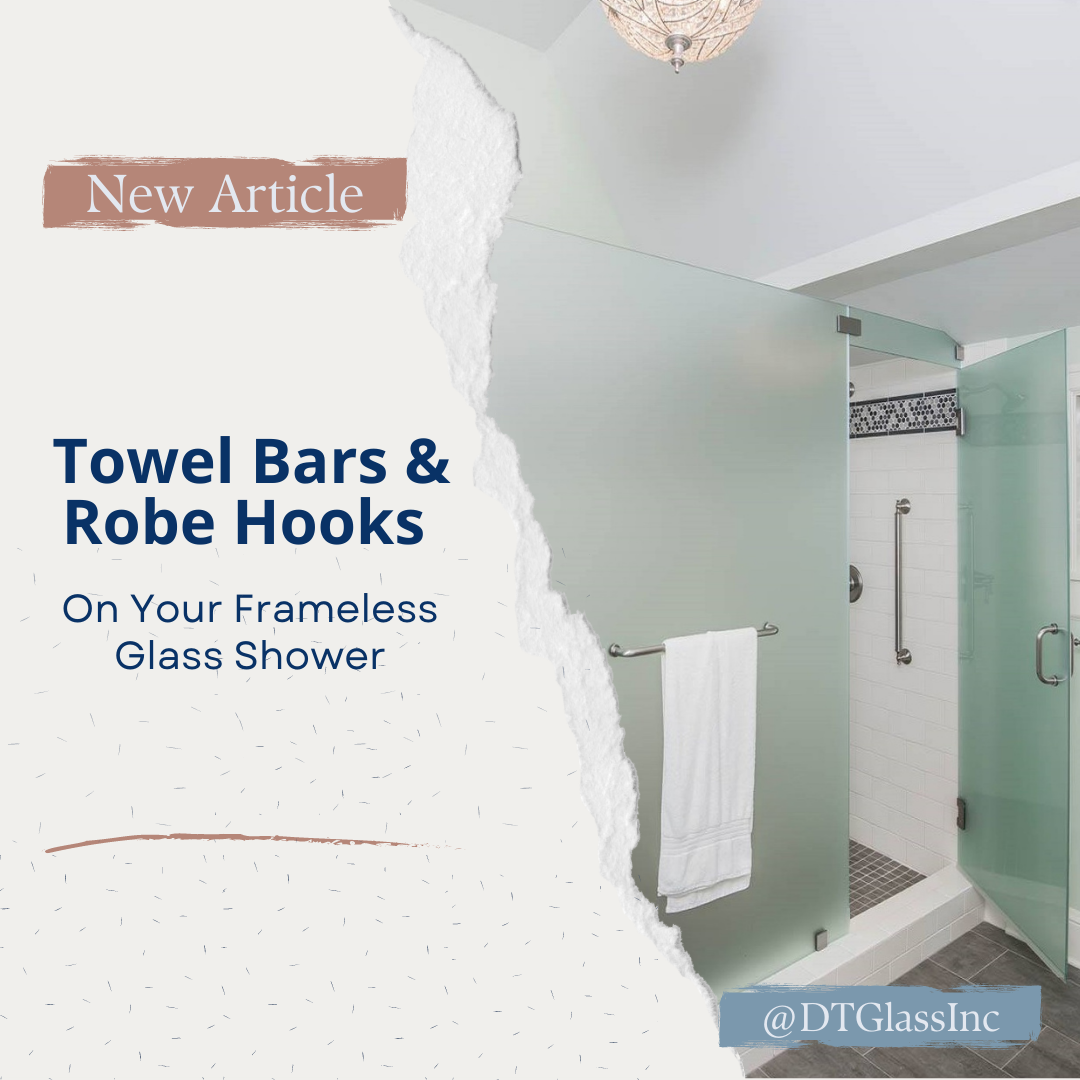
- glass@dtglassinc.com
- (503)-650-6373
HARDWARE COLOR CONSPIRACY
By Shannon Mckinney – DT Glass, Inc.
I don’t want to alarm you but choosing a hardware color is not as easy as you might expect, especially when the colors are conspiring against you!
Mastering color is a combination of art and science. The ability to create a cohesive look in a bathroom or other room of the home is hard enough, but when it comes to shower hardware, other nuances come into play. Metal has qualities that make it react differently from wall paint, ceramics, or natural materials like wood or stone.
How can you keep from falling prey to the hardware color conspiracy? Keep reading to uncover the truth.

Conspiracy #1 – You’re choosing a color, not a metal.
Hardware colors are often named after actual metals, but that doesn’t mean it’s describing the underlying base metal. For example, you might be selecting hardware colors such as Chrome, Nickel, Copper, Brass, or Gold, even though the underlying material is stainless steel or aluminum. Finding out that you’re not actually buying the metal that’s being described may seem like a marketing lie, but it’s not really meant to be manipulative. The manufacturer’s goal is to provide you with the color that you like, while at the same time making the actual product from a material that performs well. Solid gold hinges would never provide the strength and performance needed to do the job and the cost would be outrageous.
Conspiracy #2 – Color names are driven by marketing, not reality.
Now that you know hardware color names don’t represent the actual metal the product is made from, it’s easier to recognize the creative liberties that manufacturers have taken with the names of their hardware colors. They have strayed far from the path of describing metals that actually exist in the real world. In what smelting plant would we ever encounter Champagne Bronze, Rose Gold, or Elusive Golden Nickel? It’s a Periodic Table of Elements completely reimagined by the marketing team.

Conspiracy #3 – Manufacturers don’t coordinate their colors.
Trying to pull together similar hardware from different manufacturers is like trying to translate a lost metal color language. There is no Rosetta Stone for manufacturer colors, but at DT Glass, we have grouped our most common products into color “families”. For example, the Brushed Nickel color family includes CR Laurence “Brushed Nickel”, Jade “Satin Stainless Steel”, and Sure-Loc “Satin Nickel”. Each one will look slightly different from the other, but it will be the closest representation of Brushed Nickel that we have from each manufacturer.
Conspiracy #4 – The same color applied to different base metals can look different.
One of the things that creates a different finished look is when the same color is applied to different base metals. The tone of the base metal influences the effect of the final color. The result will be a slightly different tint between hardware when the base metal is brass, versus extruded aluminum, versus stainless steel. To counteract this phenomenon, it helps to use hardware made from the same underlying material whenever possible. For example, hinges, clips, and handles are made of brass, while channel is made from extruded aluminum. Choosing clips as the panel attachment instead of channel maintains a more consistent color.
Conspiracy #5 – Metal reflects the light and color of the room.
As if the physical properties of the hardware weren’t tough enough to control, now we must also understand the impact of the environment. Hardware will reflect light and color making it look different in the bathroom than it did in the showroom. Polished Nickel, for example, might look just like Chrome in the showroom, yellow tinted in natural light, and pink tinted under can lights. A Satin Brass top hinge bathed in sunlight can look drastically different from the bottom hinge in the shadows.

Conspiracy #6 – Hardware shape changes the hardware color.
Technically the hardware shape does not change the color, but it changes our perception of color and in our minds, perception is reality. Hinges and clips are flat and square, but handles are rounded. This makes a difference in how light is reflected, which changes the way we see the color. Even the consistency or the direction of the brush strokes from one piece to another can change the way we see the color.
Want to make the most informed choice for the color of your shower hardware? We have created displays of hinges, clips, channel, and handles in every CR Laurence color. Bring the fixtures or swatches that you’re trying to match to our showroom, or we can bring a couple of close matches to your space to see how it will look in its final environment.




























